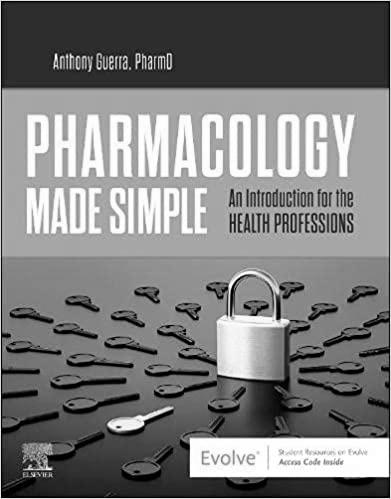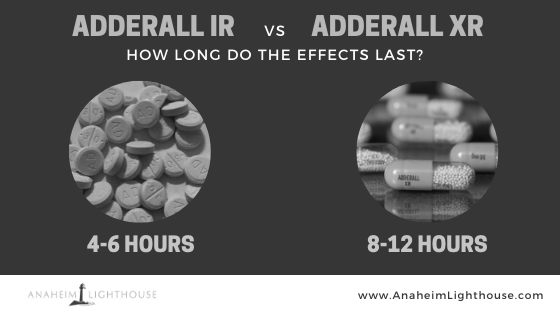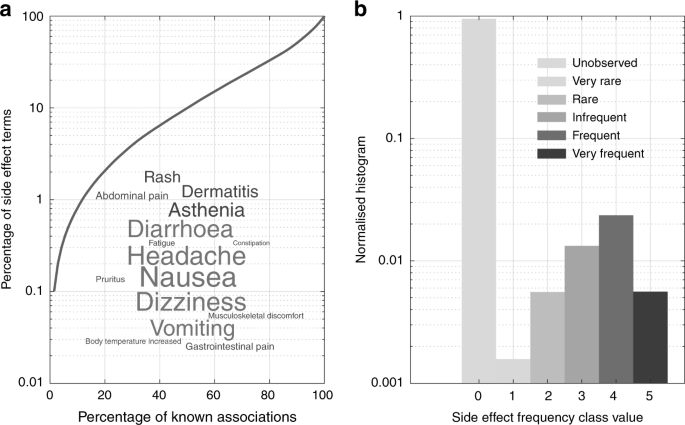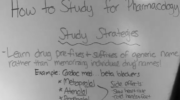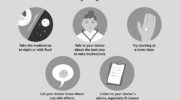There are a number of ways to get started with pharmacology, including a drug-by-drug approach that doesn’t work. Other ways to learn about pharmacology include using infographics, forming a study group, and getting enough sleep.
Studying drug-by-drug approach doesn’t work
If you are a layman getting started with pharmacology, studying drug-by-drug may not be the best method for you. This approach is not logical for learning about the side effects of a drug, as a drug’s specific effects are different than its generic side effects. Moreover, drug-by-drug approach does not work well for learning about the side effects of antibacterial drugs.
Rather than studying drug-by-drug, you should study the drug classes instead. This way, you can focus on learning about one specific class of drugs, and focus on its mechanism of action and its indications. You can also study side effects of the drugs, and learn more about the drugs’ metabolism and route of administration.
Despite the fact that it looks straightforward, learning pharmacology is a lot more complex than it seems. There are hundreds of drugs, thousands of drug interactions, and millions of side effects. Therefore, it’s necessary to have a structure, or a framework, in order to study pharmacology effectively. A good way to do that is with infographics. Infographics can help you learn the drug’s classification, mechanism of action, side effects, and more. They also make it easier to grasp difficult concepts.
While reading drug-by-drug is helpful, this approach does not work for a layman getting started with pharmacology. It is best to choose a method that fits your personality and learning style. This way, you’ll be able to memorize the facts without feeling frustrated.
A better approach for learning pharmacology is to focus on a specific drug or group of drugs. Instead of studying all of the drugs in your study, try to learn about the different effects that the drug has on the body. This will help you form an understanding and avoid forgetting them on the exam. Alternatively, consider making flashcards out of the drug name, its indications and contraindications, and its mechanism of action.
Using infographics
Pharmacology is a hard subject to master, but utilizing infographics is one way to make it more fun and easier to learn. Infographics are dynamic, easy-to-understand, and provide an orderly representation of clinical information. They also allow you to translate clinical information into patient-friendly language.
Infographics are great for many different audiences. They can help people understand complex information and engage in discussions about the topic. Infographics use the same principles of visual processing as other forms of information, allowing viewers to identify trends and patterns quickly and easily. They also make it easy for people to compare large groups of data.
Infographics are an efficient way to communicate complex ideas in simple, easy-to-understand forms. They consist of text, illustrations, and graphs. Their popularity has increased in the past decade. They are also being used in the health care industry and in medical education. The Journal of the American Medical Association has recently launched a series of infographics to help readers visualize complex medical information.
Pharmacologists should consider using infographics when communicating with prescribers. Pharmacists should use these infographics in face-to-face meetings with their prescribers because they can help stimulate collaborative conversations about mutual patients. The infographics can help pharmacists identify quality measures, which can be valuable to the prescriber-practitioner relationship.
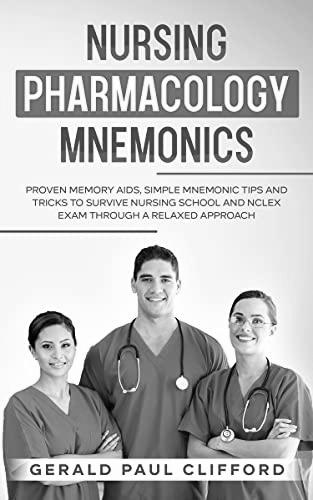
Pharmacology concepts are often complex and difficult to understand without information graphics. Using infographics can help students learn these concepts in a fun, effective way. It’s also a great way to remember important information. Pharmacology requires a lot of memorization and analysis, and using infographics can make it easier to remember. This means that your brain will be able to process the information more efficiently and effectively.
Forming a study group
One of the most difficult classes to take in nursing school is pharmacology, which is the study of the effects and uses of drugs. For most students, pharmacology is a challenging subject, and it involves studying hundreds of different drugs. However, with a few tips and tricks, you can get started and succeed in pharmacology class.
Students can form study groups for different classes, so that they will have a more individualized approach to studying for the course. It is also important to have the support of a professor or group leader who can guide students in developing a study group. If you’re not sure where to begin, some professors encourage students to meet for coffee or to develop a research project together.
One way to get the most out of your study group is to create mnemonics that will stick in their minds. Try using acronyms, illustrations, and other fun ways to remember information. You can find a variety of free mnemonics on Google or Pinterest. Even better, you can teach others about the material if you know what you’re talking about.
Getting a good night’s sleep
If you’re an insomniac and have trouble falling asleep, you might want to know how to improve your sleep. One of the easiest ways to do this is to avoid using your cell phone and other electronic devices before you go to bed. You can also try using ear plugs or a white noise machine. Moreover, avoid alcohol and nicotine, which can keep you awake during the night. You can also read up on the best methods for getting a good night’s sleep.
Insomnia is dangerous for our health, as it increases our risk of heart problems, compromised immunity, diabetes, obesity, asthma, seizures, and other health problems. It can also decrease our life expectancy. To ensure a good night’s sleep, we need to create an ideal sleeping environment. This means having a cool, dark bedroom that’s comfortable. Also, a comfortable mattress is important.
Sleep should be a natural process for us, but many people experience difficulties sleeping at night. These sleep problems can result in drowsiness, poor focus, and a low energy level during the day. In addition, they can increase the risk of heart disease and depression.
When you’re studying for your pharmacology class, you can use various methods to remember specific information. These techniques include the Memory palace technique, using flashcards, and infographics. In this article, we will discuss some of these methods. Using these methods will make learning pharmacology easier and quicker.
Memory palace technique
A memory palace is a strategy for learning by creating mental pictures of the material that is being studied. By using this technique, students can learn more information faster. For example, students can imagine themselves walking through a familiar room and placing certain objects in certain places. They can make connections between items that they recognize and new ones that they’ve never seen before.
Memory palaces are an excellent way to recall pharmacology information. They combine the power of images with the power of association, and they are supported by science. They also can help you retain information more easily. For example, in a video about ACE inhibitors, you can imagine a big ACE card that helps you remember the drugs’ mechanism of action and their adverse effects.
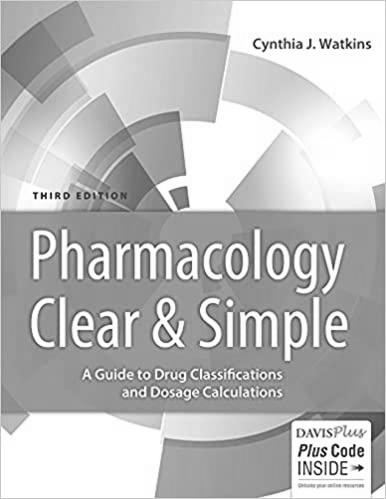
This technique has been used by mental athletes to improve their memory. Memory palaces are used to remember a wide variety of things. However, it does have a ceiling that does not match the Herculean numbers that some memory competitors can recall. This technique works well with two-digit numbers and processes them into a single image, which is much easier to recall than a long list of numbers.
Using the Memory palace technique, students can visualize objects that relate to a concept. By imagining the objects around a concept, students can make connections between concepts that are hard to remember. This technique is known as the “mind palace technique” and it is used by many memory contest champions.
Another memory palace technique uses specificity. This method helps students remember medical mnemonics by creating a mental image of the information. For example, a caterpillar wearing a pirate captain’s hat might crawl up a wall displaying an April calendar. This way, the concept of specificity becomes very concrete.
Using a mnemonic device
Using a mnemonic device in pharmacology classes can be a great way to help students learn and retain the important information they need to know. A mnemonic device can help a student remember specific information such as the role of various drugs in the body and how to treat different conditions. It is also an effective way to improve the speed and ease of memory recall.
One mnemonic device that helps students learn pharmacology includes pictures and images. This way, they can easily review the important information. This technique is especially helpful for students who find memorizing the various drugs difficult. These mnemonics are also fun to learn because they make it easier for students to remember the details of each drug. This tool will help students improve their knowledge and perform better on exams.
Another way to use a mnemonic device in pharmacology class is to create a patient-centered mnemonic. A patient-centered mnemonic is helpful for students to remember key drug therapy parameters. This strategy was tested in a randomized controlled study in which second-year pharmacy students were divided into two groups and given a 30 minute presentation on how to apply the mnemonic. Then, the students took a case-based multiple-choice clinical examination.
Another useful mnemonic device is a series of acronyms. For example, the word “hyde” sounds similar to hydroxide. Another example is a shoe metaphor for proton pump inhibitors or omeprazole. A gas pump metaphor is also useful in learning how to administer certain drugs.
Using flashcards
Pharmacology flashcards are one of the most efficient tools for memorizing drug names. They are lightweight and convenient, and they allow you to study on the go. Although flashcards come in text format, some people prefer visuals. These cards contain key information about drugs, their dosage, and possible adverse reactions.
Pharmacology flashcards can help you learn different concepts at once. They are also useful when studying in groups. You can use them to learn about the cardiovascular system, respiratory system, antineoplastic agents, and many other subjects. Moreover, you can easily find these cards online and make them reusable.
Another useful tool for studying pharmacology is a pharmacology medication organizer. These organizers categorize different drugs and highlight important information from professors. This way, you can avoid forgetting important information for the exam. Another good option is a reference book or a reference guide. There are websites like Nurse in the Making and LevelUp RN that offer pre-made note cards that will aid you in learning and memorizing pharmacology.

In addition to the pre-made decks, you can use mnemonics to memorize the material more efficiently. You can use Google and Pinterest to find free mnemonics for pharmacology. You can also create your own mnemonics by using your own images. Just make sure you choose the right resources and take the time to study.
Pharmacology is a subject that will be vital to your medical career. It is a vast subject, and requires a lot of memorization. The use of pharmacology flashcards will help you memorize the material faster and better, improving your NCLEX EXAM test score and grades.
Using infographics
Learning pharmacology can be difficult, but using infographics can help you remember what you need to remember. Pharmacology is a complex subject with many important details to remember. Visual representations make the process of learning much more interesting, and they can provide a concrete picture of how drugs affect the body. Pharmacology flashcards and guides are ideal study aids, but you can also create your own set of pharmacology flashcards. These flashcards should include the name of the drug, the dosage, mechanism of action, adverse effects, and more.
Infographics can help you understand specific diseases and procedures, or even hot healthcare topics. The use of infographics is not new, as cavemen used information design in their daily lives, even without realizing it. By putting complicated information into graphical snapshots, infographics help people remember complex information more easily.
Infographics are one of the most effective ways to communicate complex information. They are an excellent teaching, presentation, and business tool. They help students remember information more easily. Infographics are a simple, appealing way to explain complicated topics. The College of Charleston and other institutions around the world have created many great infographics to help you learn the information you need to remember.
Infographics are especially useful for remembering pharmacology information. Pharmacy infographics can condense vital facts into digestible chunks, making the process much easier for students to understand. Pharmacology infographics can also contain illustrations to make the message as simple and accessible as possible.
Using a patient-centered mnemonic
Pharmacology students may benefit from using a patient-centered mnemonic, which helps them remember important parameters of drug therapy. One study found that students who used a patient-centered mnemonic performed better on the clinical examination. Researchers randomized second-year pharmacy students to an intervention group or a control group and then administered a case-based multiple-choice examination to each group.
Pharmacology is a complex subject, and students need a way to remember the most important factors. A patient-centered mnemonic provides a quick and easy way to recall key parameters. Students must be able to evaluate drug regimens and make informed decisions to ensure that patients are receiving the appropriate drugs. Pharmacology students must also learn how to make good clinical decisions, which is an acquired skill.
A patient-centered mnemonic can be useful for nurses in many different settings. For example, nurses can use a mnemonic to determine a patient’s level of activity-of-daily-living (ADL) and determine whether the patient is capable of doing so on their own. Another patient-centered mnemonic can be used to remember treatment protocols in a heart attack. The acronym “MAP” stands for morphine, oxygen, and nitrates, and the faster treatment is administered, the less chance of heart damage or death.
Although mnemonics can be useful, they can be limited in their effectiveness. While a mnemonic can help students remember important details about pharmacology, it is not comprehensive. It cannot address all aspects of drug-drug interactions, contraindications, and other key elements of drug-therapy decisions. For example, it cannot cover the important factors related to fluid status or age. It cannot be the sole means of remembering pharmacology, but it can help students train their brain to remember clinical decisions.
A patient-centered mnemonic can help students remember the key concepts and terminology in pharmacology. It has proven effective in a study that aimed to objectively assess the effectiveness of a mnemonic. The study found that students who learned the mnemonic before taking their case-based exam needed less than 30 minutes to absorb the information and practice it. However, the process of memorizing the pharmacotherapy mnemonic can be tedious at first.
